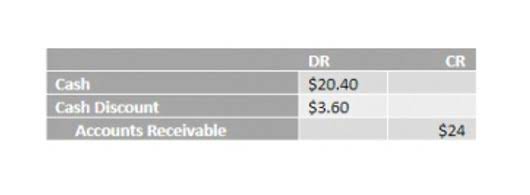
While it plays a crucial role in funding public services, calculating sales tax can be complex for both businesses and consumers. Understanding how to accurately calculate sales tax is essential for ensuring compliance with tax laws and avoiding potential legal issues. In this guide, we will walk you through the process of calculating sales tax in the USA, covering the basics, common exemptions, and useful tips to help you navigate this important task. Different factors come into play while determining sales tax rates, including the location of the transaction, the type of product or service being sold, and any applicable exemptions.
- Proper documentation aids in reporting and remitting sales tax to the state.
- By understanding the components of sales tax, using the correct rates, and leveraging tools, businesses and individuals can avoid common mistakes and ensure smooth transactions.
- The amount of sales tax that would apply to Emilia’s purchase of this chair is $3.75.
- Using bookkeeping software will avoid sales tax calculating issues, but it is good to understand the basic math formulas behind the process.
- Many accounting and point-of-sale systems have built-in features for calculating and managing sales tax.
- More online purchases are now subject to sales tax for consumers, even if the seller is located in a different state.
- For businesses with multiple locations or those making interstate sales, sales tax automation software may be helpful in ensuring compliance with various tax laws.
How to Calculate Sales Tax, With Examples
Various online tools and services can assist businesses in identifying the correct sales tax rates based on the location of the transaction. Sales tax is a consumption tax imposed by government authorities on the sale of goods and services. It is typically calculated as a percentage of the sale price and collected by retailers at the point of purchase. Understanding how to calculate sales tax is crucial for ensuring accurate financial transactions and compliance with Certified Bookkeeper tax laws. However, it’s essential to note that a single ZIP code might have multiple tax jurisdictions within it.
Money Influencer Vivian Tu: This Tax Hack Can Save Business Owners Big Money
The first bookkeeping step in calculating sales tax is to identify the correct sales tax rate. Each state sets its own base rate, and many counties, cities, and municipalities may impose an additional local sales tax on top of the state rate. For business owners, sales tax is more than just another number on an invoice—it’s a critical factor that can directly affect your profits. To sum up, when calculating sales tax, pay close attention to the type of item or service in question, the food category, and applicable state regulations. Understanding these factors will help make the process of determining taxable items and calculating sales tax much more manageable. Sales tax is a consumption tax imposed on the sale of goods and services.
- Overcharges can lead to customer dissatisfaction and may have legal implications.
- To calculate sales tax accurately, it’s crucial to understand the components of the total amount.
- When calculating sales tax, remember to add the calculated tax amount to the sales price to determine the total amount due from the customer.
- Those making an online purchase should check whether sales tax is applied at checkout and whether it reflects the rate for their location.
- Yonda is the only global tax technology provider offering a fully managed solution.
- In conclusion, sales tax is an important element in the financial landscape, affecting both businesses and consumers.
- Generally, sales tax applies to tangible personal property (items that can be physically picked up and moved) unless specifically exempted.
How Marketplace Facilitator Laws Impact Online Sellers

However, it is crucial for businesses to properly classify and document sales exempt from sales tax to avoid audits, penalties, and back taxes. Knowing how to calculate sales tax from the total is essential for both businesses and consumers. It ensures transparency in transactions, helps prevent overcharges, and enables accurate financial planning. Business owners responsible for collecting sales tax should maintain accurate records of all transactions. These records should include details such as the sales tax rate, the amount collected, and the total sale price for each transaction. Proper documentation aids in reporting and remitting sales tax to the state.
- Many state websites also provide FAQs, tax tables, and guides tailored to local requirements, ensuring accuracy in calculations.
- Foreign diplomats working in the U.S. may also be exempt from paying certain taxes, including sales tax.
- It is typically calculated as a percentage of the total purchase price and is collected by the seller at the point of sale.
- Sales tax rates vary across different states in the United States, and even within various regions in other countries like Canada.
- You can practice with the examples on this page by downloading our free sales tax calculator in Excel, which is also useful if you like using a manual bookkeeping system.
- To accurately calculate and collect sales tax, businesses must be aware of sales tax rates in the various jurisdictions where they operate or sell goods.
By keeping detailed records, you’ll be better prepared to file accurate returns and avoid any issues explain the process for determining sales tax and total purchase price. with underreporting or overpaying sales tax. Once you’ve calculated the amount of sales tax, the next step is to add it to the original price to determine the total amount you’ll need to pay. For example, if you’re purchasing an item priced at $100, and no discounts are involved, the taxable amount is $100.

How is Sales Tax Calculated

For example, in many states, essential items like groceries, prescription medications, and certain medical supplies are not subject to sales tax. You can check the sales tax rate for your location by visiting your state’s Department of Revenue website or using an online sales tax calculator. Sales tax is a percentage of the sale price collected by retailers and remitted to the government. It is applied to most goods and services, though specific items may be exempt depending on local regulations.
